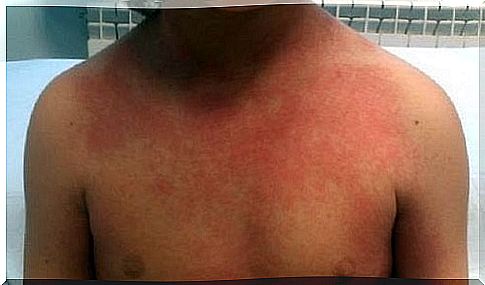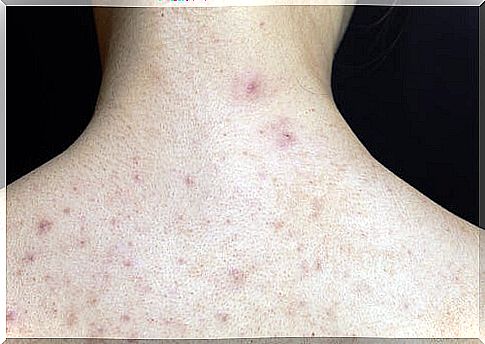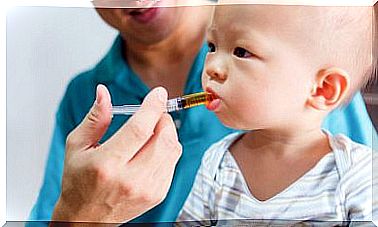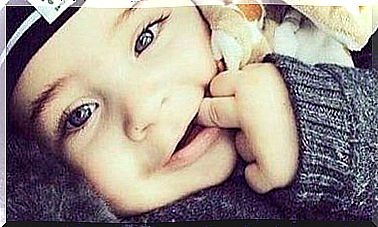Scarlet Fever In Children: What You Should Know

Children’s health is one of the issues that most concern parents. Knowing the most common illnesses that can occur during childhood is necessary to be able to prevent and treat them in time. Scarlet fever in children is one of them.
What is scarlet fever?
Scarlet fever – also called scarlet fever – is an infection caused by a group A streptococcal bacterium. This microorganism is capable of producing a toxin, which is a substance that certain people may be sensitive to.
It should be noted that not all group A streptococci produce toxins. Furthermore, not all people are sensitive to its effects. Scarlet fever in children usually occurs between 4 and 8 years of age. It is much less common to develop in children under the age of 2 years.
Scarlet fever causes
Type A streptococci usually infect the mucosa. Its most frequent form of transmission occurs through small droplets of infected saliva. These are released into the environment through coughing or sneezing.
Yes, there are other means of contagion of scarlet fever, but of lesser incidence. The disease is also transmitted, for example, through poorly washed food or toys and utensils that children can put in their mouths, that is, through contact. It can also be transmitted through pus, but there are few recorded cases.
Scarlet fever has an incubation period ranging from one to three days. Incubation is the period of time between infection and when symptoms first appear. During this time of infection incubation, the affected child can infect more people.
One of the places most prone to the transmission of scarlet fever is the school. Furthermore, it appears with greater virulence in winter.

Scarlet fever symptoms in children
There are two moments of manifestation of this infection. The early stage can easily be confused with typical tonsillitis. It has extremely similar symptoms. It is common for a high fever that appears abruptly during this period. Along with the fever, the child may experience sore throats and headaches. Vomiting is not very frequent, but it can be another symptom of this phase. Abdominal pain and a feeling of exhaustion may also appear.
The second stage of scarlet fever is the period of redness (also called a rash). This is the most characteristic manifestation of scarlet fever and is also where its name comes from. It is a reddish (scarlet) rash that initially appears on the child’s face and neck. Later, it expands downwards throughout the rest of the body.
At first, the appearance of scarlet fever redness may have some resemblance to a sunburn. When pressing the red body part, the skin tends to lighten. Afterwards, the skin becomes rough and very small pellets appear.
Another important feature is that this redness affects the elbows or the back of the knees. It is also detected in the underarm area. That is, it usually settles in areas of the body’s creases. It has the particularity of not attacking the area between the nose and mouth. In addition to the redness, it is also common for the tongue to acquire a deep red color and for the nodes in the neck to increase in size to the touch.

Once 5 days have passed since the appearance, the redness starts to disappear. Then begins a desquamation process similar to what happens with a burn. This process can take up to 8 weeks.
How is it diagnosed and what is the treatment?
In addition to the symptoms that may be noticed, the most effective method of diagnosing scarlet fever is to have a throat culture. This is a laboratory test that will detect scarlet fever immediately. In any case, it is important to keep children away from people or groups of children who have or are suspected of having scarlet fever to prevent its spread.
The indicated treatment for this childhood disease is antibiotics. Especially penicillin, or in its failure amoxicillin, for at least 6 days is recommended. Scarlet fever in children is a mild infection that appears less and less frequently. Therefore, if it is properly handled, it shouldn’t be a concern for the parents.









